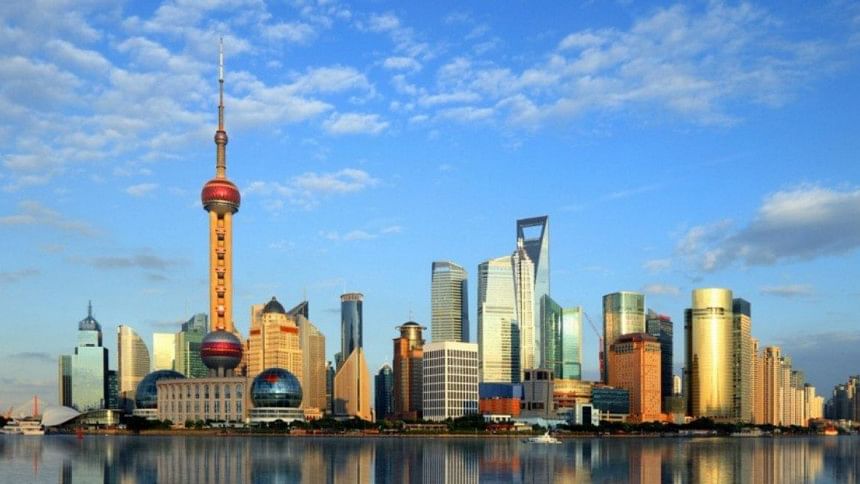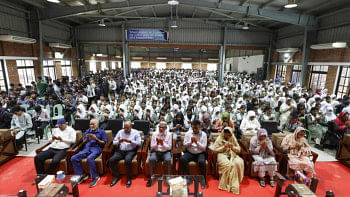China, South Asia and Asian regionalism

China's rising prosperity and the shift to a strategy of economic rebalancing, for the better part of a decade now, presents a unique opportunity for much stronger trade and economic relations with the country, not only for developed countries but also for developing countries, including South Asia, as it shifts resources to grow its domestic market. The two-way trade of these countries with China is already large and growing, although most face large trade deficits. The most significant aspect of this development for South Asia is the strong growth of trade between South Asian countries and China. For instance, India's export has increased from near-zero to around 7 percent of its total exports in 2005 and further to over 10 percent in 2015; while China's export to the region's countries grew to 7.1 percent in 2005 and to 12 percent in 2010. The total two-way trade increased from USD 49 million to a whopping USD 70 billion (2010), and was estimated at USD 150 billion by 2015. Bangladesh's trade with China has also increased significantly in the past 10 years. In 2005, for instance, Bangladesh's exports to China was USD 64 million, it increased to USD 320 million in 2010 and further to around USD 450 million in 2015, while the total trade volume grew from USD 2.1 billion in 2005 to USD 6.2 billion in 2010. Other countries in the South and South East Asia region have enjoyed similar growth in their trade with China. As China opens up its domestic market to low income countries, the benefits to Bangladesh could be potentially large.
Growing trade relations with China present a contrast to the experience of the SAARC Free Trade Agreement. The growth in trade among SAARC countries remains constrained by 'behind the borders' barriers - an issue which needs to be addressed with greater deliberation. However, the issue of trade imbalance between individual SAARC countries with China and India remain an area of policy concern. Both countries are thus developing plans to investment in the countries of the region to stabilise the overall balance of payments with the respective country. Sustained economic integration through trade and investment among the two Asian giants, China and India, is central to stable growth of China-South Asia economic relations, and indeed to the stability and wellbeing of the wider Asian region. A significant boost to this crucial relationship would be to permit China's entry into SAARC, thus bringing together two of the world's fastest growing large economies and ancient civilisations under a single framework of economic cooperation. As a corollary, the BIMSTEC sub-regional cooperation framework should also be pursued with much greater vigour. Extending South and East Asian's trade and investment experience with China to South Asia and Central Asia has the potential not only of lifting South Asian economies into much higher levels of prosperity and wellbeing, but also of transforming Asian regionalism into a significant force for global peace, stability and economic wellbeing.
China's economic rise is arguably the most significant geopolitical event of the last 100 years. Until a decade ago, the industrialised world led by the US, the preeminent economic and military power since the late 19th Century, seemed to have managed relations with China effectively, permitting China's entry into global institutions, and thus enabling it to become a part of the international community. However, with China's rise to the very top of the economic 'ladder' (GDP in purchasing power parity terms) at a time when the industrialised economies came under severe stress in the wake of the global financial crisis (the effects of which are still lingering), along with the former's growing military strength, has sparked tensions in their relations.
The sense of 'anxiety' about China may be accentuated by the fact that China does not share the same political ideals as those of the liberal democracies of the industrialised world. The recent escalation in tensions relating to the territorial disputes between China and Japan around the Senkaku Islands (Diaoyu Islands to China) - and between China and some ASEAN countries over the 'Spratly Islands' in the South China Sea with the US lending it's weight to its traditional allies Japan and the ASEAN countries in these disputes, following the 'strategic pivot' in its naval power back to the Pacific region and a 'newly' assertive China unwilling to allow the re-entry of US military power in the region - has added a new dimension in these tensions. However, these issues must be understood in their historical context apart from being the fallout from changing global geopolitics in the Asia Pacific region. The US had predominant political and military influence in the region since the end of the American-Spanish War in 1898, i.e. for over a century. Their response is therefore partly understandable but it is crucial to review the fundamentally changed status of the region. Issues of territorial claims among Asian countries, as in many other parts of the world, have deep historical roots. The colonial and 'Cold War' super powers also contributed to some of these disputes. Such issues are particularly difficult to resolve and where they have been resolved, have taken a long time. Thus, if peace and the wellbeing of Asia is of paramount concern for the major Pacific powers - the US, China, India and Japan, they would have to seriously consider setting aside the more complex political issues and let economic integration 'drive' the deepening of relations between the countries with disputes, till such time as an environment of mutual trust is created for their peaceful resolution. Many Sinologists will argue that China's experiences during the colonial period, and its long period of decline as a country, causes it to be more 'assertive' in its external relations in the wake of its new found economic and military strength. Sceptics however, will argue with equal vigour, that large, economically and militarily strong nations with global interests, once they have passed a threshold level of development, tend to 'flex their muscle', which is manifested in projecting their military power, ostensibly to protect their economic interests well beyond their borders. They are thus prone to either 'intimidate' or use force to resolve disputes.
Historical evidence would suggest that the 'old order' does not give way to newly emerging forces which perceives as a threat to their dominance as power or powers. The process of global restructuring of economic and political power will no doubt 'test' the resolve of all powerful nations - emergent and emerging - to keep the peace in Asia as it continues to emerge as the world's new economic power house. It was no coincidence that the last 70 years, since the end of WWII, has been an era of unprecedented economic, technological and intellectual progress across the globe. There can be no better example of a peace dividend in history. Asia also needs peace to continue on its journey to prosperity and create its own legacy of human progress in the modern era. This would be impossible without China and indeed India and the ASEAN. China, along with India and ASEAN, must be allowed to prosper and achieve their economic aspirations in peace. Efforts to isolate one or the other of the emerging Asian countries or economic groupings may aggravate tensions rather than diffuse or resolve them.
On its part, China too must reciprocate by discharging its obligations consistent with its newly acquired stature, including a deep commitment to keeping the peace in the region. China must play a more proactive role to convince the region about the seriousness of its commitment to peace and development in Asia. Boosting its investments in South Asia and opening its domestic market at a faster pace will be important to achieving this end. Although, China remains a developing country in many respects, it will nevertheless face increasing 'pressure' to increase its ODA flows to the LICs, especially in its neighbourhood.
As alluded to above, tensions and conflict may well arise as major rebalancing of global power takes place, but these must be managed and resolved within the ambit of international law, regional and bilateral political and economic arrangements. While a 'balance of global military power' may be necessary to keep the peace, it is important for all countries to avoid unilateral actions and confrontational positions but rather work through existing global and regional security arrangements and institutions, and if necessary establish new ones which might be more effective. Closer to home, the tensions of the Pacific may well spill over to the Bay of Bengal. It is in South Asia's, plus Myanmar, Malaysia and Indonesia's, vital interests to ensure that it remains a zone of peace, free from strategic maneuverings by major powers. China and India have a special role to play in achieving this goal.
The newly industrialising and industrialized nations of Asia must play a stronger role in preventing an arms race in the Asian continent if they are to not undermine their loftier goals for the region. Just as the 21st Century ought to witness an end to hunger and abject poverty and a return to the ideals enshrined in the UN Charter, it must also witness the abolition of 'war' as a moral imperative. This would be a remaking of Asia's history and may finally spell 'the end of history.' As a country which did not colonise and has rewritten the 'laws of economic development' as we know them in the modern era, China has the rare opportunity to 'walk the talk' of a just peace and shared prosperity as it continues to rise as an economic power. Seizing it would signal a bold stride towards a Pax Asiana and moving away from the less lofty option of a 'Pax Sinica.'
The writer is Executive Director, BIGD, BRAC University.

 For all latest news, follow The Daily Star's Google News channel.
For all latest news, follow The Daily Star's Google News channel. 



Comments